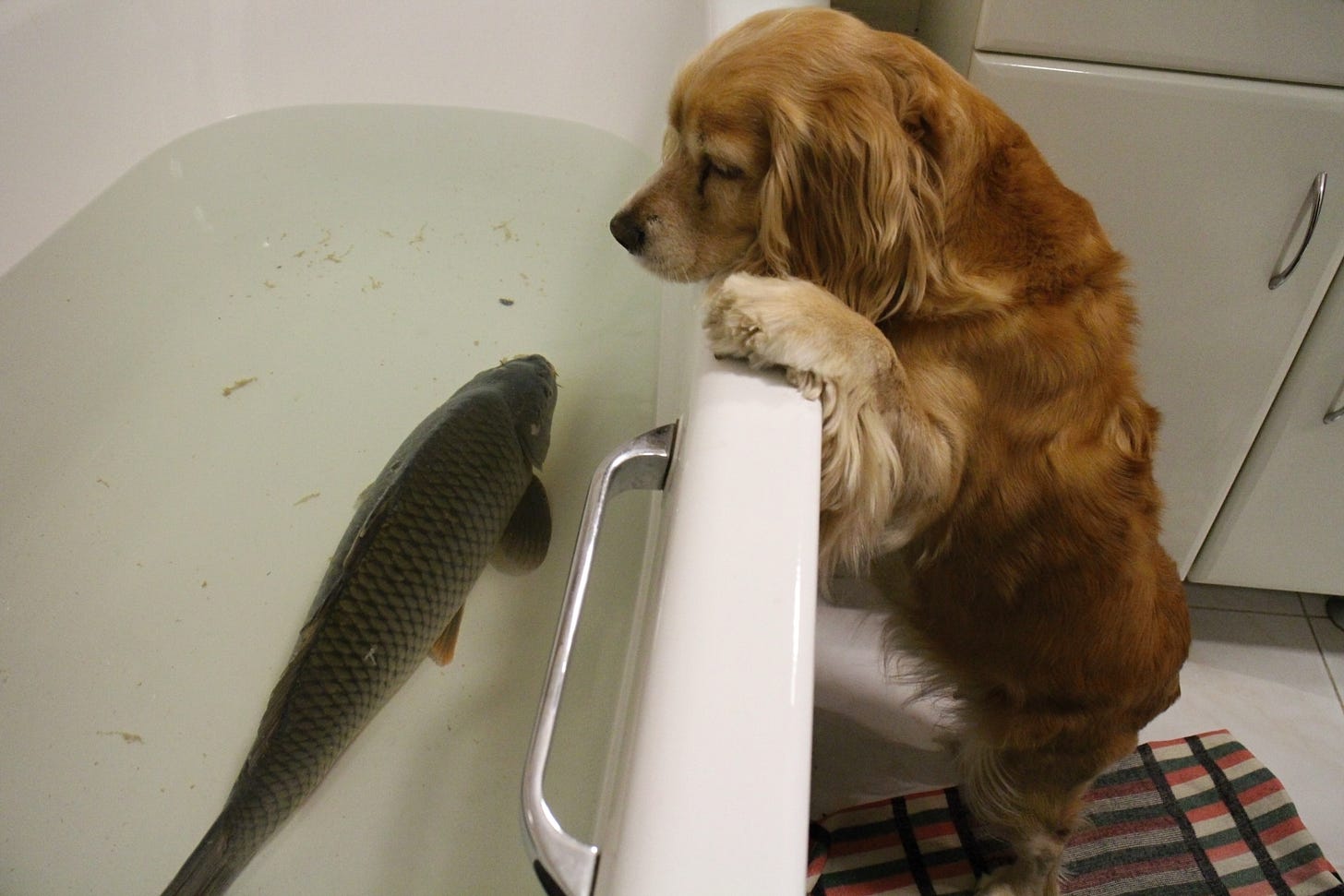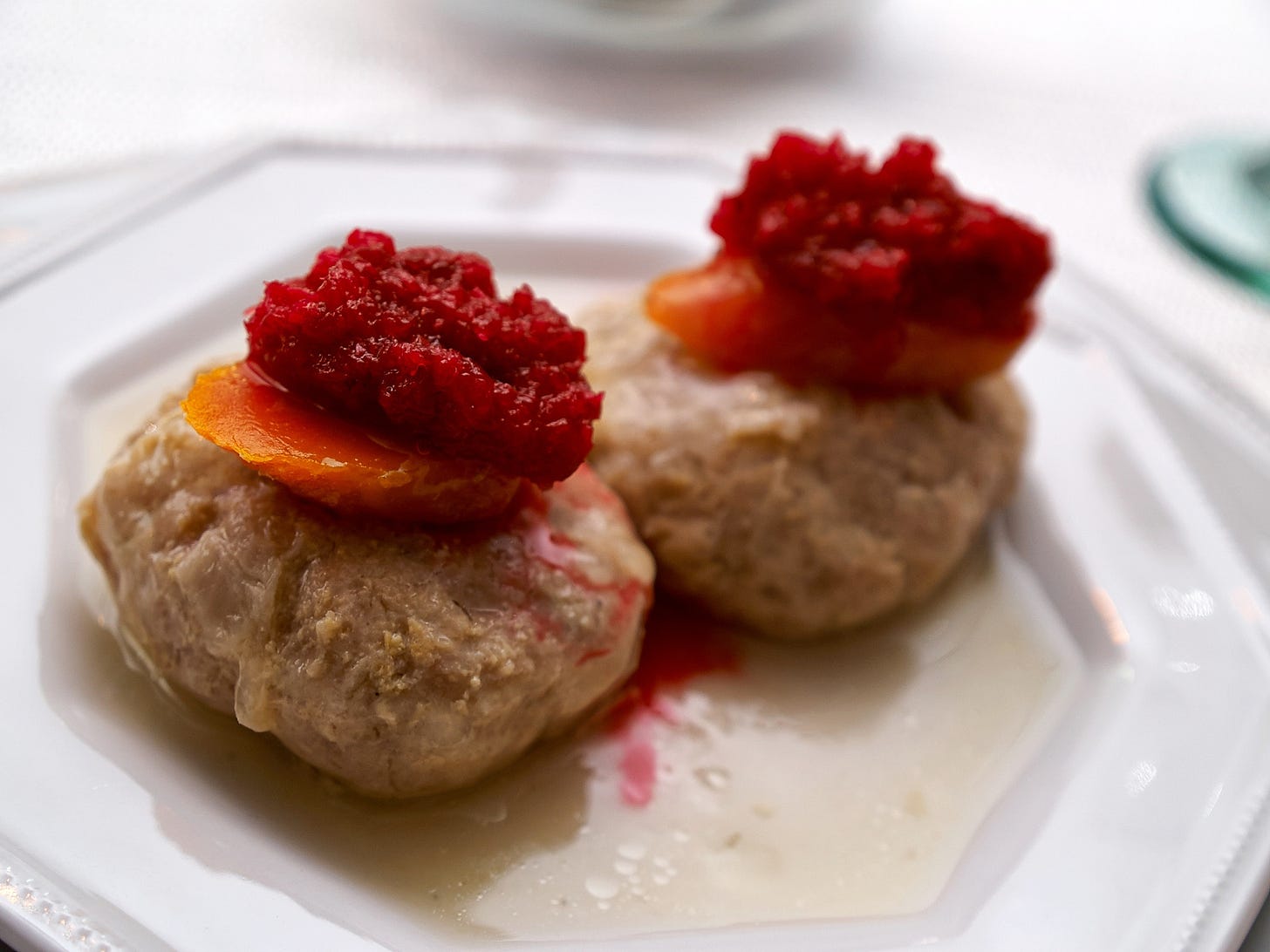Do you have any favorite camping foods? Please comment and tell me them, I’ve got a camping-heavy few months coming up and I’m at a bit of a loss. -Katherine

The Carp in the Bathtub
By Hallel Yadin
If there’s an obscure historical phenomenon you’d ever like to trick people into asking you about, wear a cute hat depicting it. That’s what I learned when I acquired this cap, which features an appliqué of a fish perched over a tub. It’s a very fun cap, but as I learned, the reference is a little confusing.
The carp in the bathtub references a tradition strongly associated with twentieth-century Ashkenazi Jewish immigrant communities. When it came time to prepare Passover seders, they wanted their gefilte fish — a type of festive minced fish patty — to be as fresh as possible for the holiday meal. But the intensive process of kashering the house for Passover, which requires that not a trace of chametz (grain) is left behind, took days. Enterprising cooks would have already purchased their fish for the meal. The solution? Keep live carp in their bathtubs until it was time to start cooking. (Outside of the American context, this is also a modern-day Slovakian Christmas tradition.)

Gefilte fish was so prominent at the Passover table because it was a tasty preparation of an affordable protein. Fish can also be served with dairy under Jewish dietary laws, unlike other kinds of meat. The dish itself is a symbol of resourcefulness, and the bathtub element is another layer of ingenuity. This practice was a testament to keeping tradition alive in the face of poverty and pressure to assimilate.
The fact that this ever happened is a bit of a hazy dream. Documentation is murky, given the private, domestic nature of food preparation. Yet the image has a stronghold on the imagination of a certain subset of nostalgic Jews, myself included. As Liz Alpern, co-founder of The Gefilteria, which produces the carp hat, told me, “It's almost so outrageous, and yet, it is the lived experience of so many people that it just hits a really deep place in people's memory banks and their emotion banks…I do think there's an element of the absolute sort of unbelievable memory of this phenomenon that really strikes people.” The memory of the practice is preserved in the classic 1972 children’s book “The Carp in the Bathtub,” not to mention in the retellings of those who grew up with it. And for those who still haven’t heard of it, I often knock around town in my cap.
More Food Reading:
Almost booked a ticket to New York on this information alone.
(Here’s the Smart Mouth piece.)

The Smart Mouth newsletter schedule is changing, as are the paid subscription benefits. The free edition, with articles by freelancers, will now publish three times per month. Once per month, paid subscribers will get an edition written by me. Sometimes it will be something quippy, sometimes it’ll be something long and serious … maybe sometimes it’ll be scenes from the food history-related screenplay I’m writing. (What? I’ve lived in L.A. for 18 years without writing one. If I don’t have it finished in two years, they’ll kick me out.) Also, for a limited time, paid subscribers will receive a merch set.
Free subscription:
Articles written by freelancers around the world, three times per month
Paid subscription:
Articles written by freelancers around the world, three times per month
One article per month by me
A Smart Mouth travel mug and travel utensil set
Last note: advertisers! I have an excellent open rate, and I can bundle ads with the podcast and How to Eat L.A. Reply to this newsletter if you’d like to talk.
If you liked the newsletter today, please forward it to someone who’d enjoy it, and tap the heart icon above or below, which will help me reach more readers. I appreciate your help, y’all!
This newsletter is edited by Katherine Spiers, host of the podcast Smart Mouth.
A TableCakes Production.
Want to contribute? Here are the submission guidelines.




